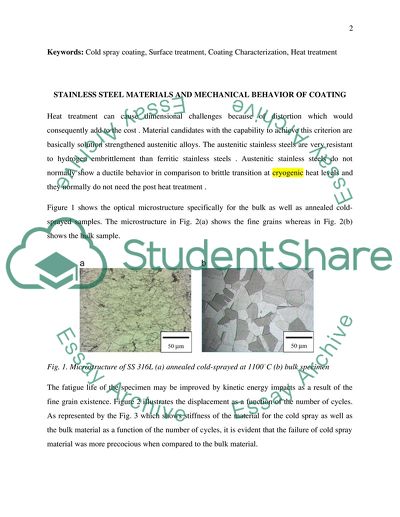Cite this document
(Cold Spray of Stainless Steel Alloys: An Industrial Revolution For Book Report/Review, n.d.)
Cold Spray of Stainless Steel Alloys: An Industrial Revolution For Book Report/Review. Retrieved from https://studentshare.org/engineering-and-construction/1814436-cold-spray-of-stainless-steel-alloys-an-industrial-revolution-for-future-applications
Cold Spray of Stainless Steel Alloys: An Industrial Revolution For Book Report/Review. Retrieved from https://studentshare.org/engineering-and-construction/1814436-cold-spray-of-stainless-steel-alloys-an-industrial-revolution-for-future-applications
(Cold Spray of Stainless Steel Alloys: An Industrial Revolution For Book Report/Review)
Cold Spray of Stainless Steel Alloys: An Industrial Revolution For Book Report/Review. https://studentshare.org/engineering-and-construction/1814436-cold-spray-of-stainless-steel-alloys-an-industrial-revolution-for-future-applications.
Cold Spray of Stainless Steel Alloys: An Industrial Revolution For Book Report/Review. https://studentshare.org/engineering-and-construction/1814436-cold-spray-of-stainless-steel-alloys-an-industrial-revolution-for-future-applications.
“Cold Spray of Stainless Steel Alloys: An Industrial Revolution For Book Report/Review”, n.d. https://studentshare.org/engineering-and-construction/1814436-cold-spray-of-stainless-steel-alloys-an-industrial-revolution-for-future-applications.


